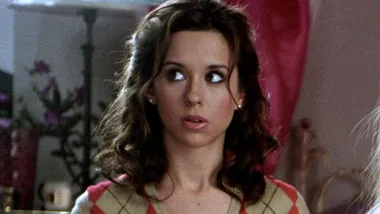Earlier this year, the skies lit up with two rare planet parades—the cosmic phenomenon of planets aligning in the sky. Venus, Saturn, Jupiter, Mars, Uranus and Neptune all lined-up for our viewing pleasure in January and early February. Now, we’re pleased to announce that the final planet parade of 2025 is happening this week, between August 10 and 20.
Also known as the ‘planetary parade’ or ‘planetary alignment’, this rare celestial show is when the planets appear to line-up in the sky—and it’s visible to us on earth. Below, everything you need to know about the final planet parade of 2025—and how to best see it from Australia.
What Is The Planet Parade?
The planet parade or alignment refers to when planets form a relatively straight line across the night sky. While, in reality, these planets are millions of kilometres apart in space—they appear to be closely and neatly aligned from Earth. Each planetary parade can involve up to all the planets. In January 2025, there were six planets in alignment. Through August, our planet parade will involve:
- Mercury
- Venus
- Saturn
- Jupiter
- Uranus, and
- Neptune
Where Can I See The Planet Parade In Australia?
You should, in theory, be able to see the planet parade from your backyard in the night sky. However, city folk will have a harder time viewing it than those with fewer lights and pollution to contend with. Similarly, not all planets are visible to the naked eye, and will need to be viewed through a telescope. (That’s you, Neptune and Uranus.)
If you’re feeling adventurous, you may want to visit Australia’s only protected ‘dark sky park‘, located in the NSW central west. These designated zones are specifically for stargazing and viewing the sky. If you’re not in NSW, not to worry. While this is Australia’s only dedicated dark sky park, there are plenty of clear regions throughout the rest of Oz.
TIP: Get a stargazing app, like Stellarium, Star Walk or Night Sky, which will allow you to locate star and planet positions on your phone and match it up to the sky. This will ensure you’re looking in the right directions, and that you actually know what you’re looking at.
Still don’t know what you’re looking at? Remember, planets are different to stars in the sky because they don’t ‘twinkle’.
The Best Time To View The Planet Parade
The best time to view the planetary parade is apparently 60 to 90 minutes after sunset, or before dawn. The closest and brightest planets—Mercury, Venus, Jupiter and Saturn—will be visible to the naked eye. Meanwhile, you may need binoculars or a telescope to view Neptune and Uranus. Note, Mercury moves out of sight very quickly due to its proximity to the sun. In Australia, it will only be visible on the horizon an hour before sunrise.
When Exactly Is The Planet Parade?
Venus and Jupiter will be the easiest to see from August 10, with Mercury also becoming visible beneath these planets as sunrise nears. On August 12, Venus and Jupiter will also line up, with Saturn also visible. Neptune and Uranus will be high in the sky, though invisible from earth. The real action happens between August 17 and 20, though, as the waning crescent moon moves past the planets. (Note: You’ll need to check exactly what time the sun sets and rises in your city.)
How Rare Is A Planetary Parade?
It’s not a super rare occurrence, with the last planet parade happening in February (with seven planets) and, prior to that, January (with six). However, NASA has said, “they don’t happen every year, so it’s worth checking it out.” The planet parade beginning in March is thought to occur roughly ever few years, and the addition of Mercury is particularly special. “Mars, Jupiter, and Saturn are frequently seen in the night sky, but the addition of Venus and Mercury make four- and five-planet lineups particularly noteworthy,” NASA wrote on its website.
Does The Planet Parade Mean Anything In Astrology?
In the world of astrology, all cosmic events are thought to correlate to Earthly events—and a planet parade is no different. It all has to do with proximity to Earth, enhancing the associated effects of each planet. The signs that will feel it the most:
- Pisces
- Taurus
- Leo, and
- Capricorn


